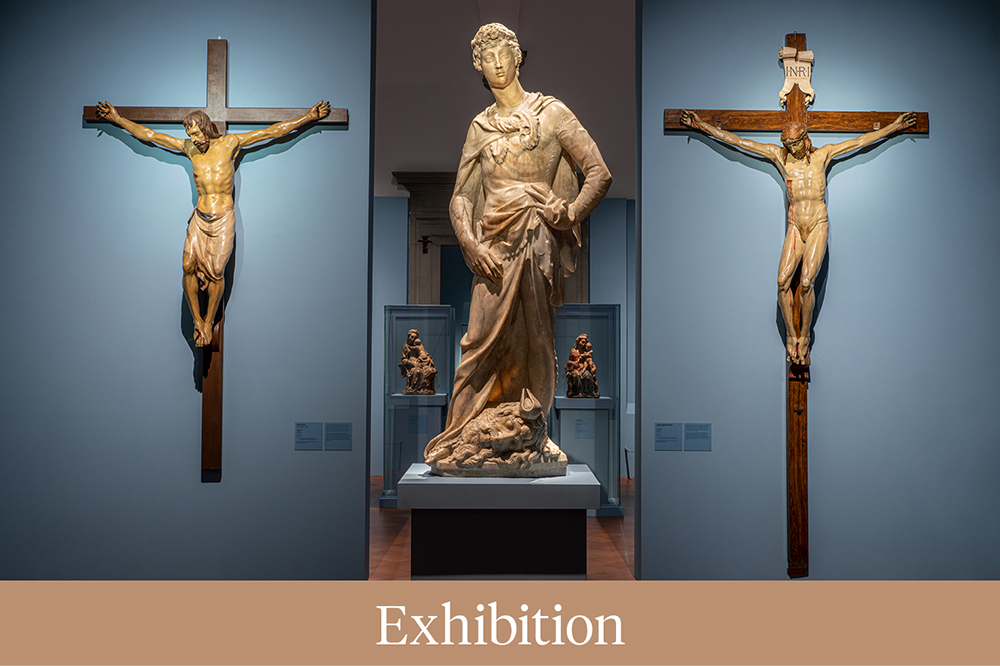Donatello: the Renaissance
Palazzo Strozzi and Museo Nazionale del Bargello, Florence
19 March–31 July
‘Donatello: the Renaissance’ at Palazzo Strozzi wore its heart on its sleeve. The introductory text panel left no doubt as to the show’s ambitious agenda: ‘If there is one artist who can be said to be the father and the symbol of an era in Western art, that artist is Donatello and the era is the Renaissance.’ In Florence, this collaboration between the Strozzi and Bargello, the Berlin State Museums and the V&A in London offered visitors an unrepeatable experience. The exhibits included exceptional loans from all the partner institutions, plus works such as the Siena baptistery bronzes that were making their first appearance in a museum. There were some extraordinary set pieces. As an opening, the early marble David was set between the two crucifixes by Donatello and Brunelleschi, the subject of Vasari’s tale of humorous rivalry and mutual admiration: Brunelleschi’s refined Christ versus Donatello’s peasant on a cross.
A subtle combination of chronological progression and thematic rooms allowed curator Francesco Caglioti to guide his audience expertly through Donatello’s vast and restless oeuvre. In his introduction to the impressive catalogue (co-edited with his collaborators Laura Cavazzini, Aldo Galli and Neville Rowley), Caglioti argues that the show’s scope extended far beyond Donatello’s death in 1466 to encompass the entire 16th century – and the exhibition consciously charted the artist’s ‘influence’ (Caglioti being fully aware of the concept’s baggage).
The exhibition’s equally unmissable annexe at the Bargello juxtaposed artists from Desiderio da Settignano to Pontormo measuring themselves against Donatello’s bronze David, raised up for the occasion to a height approaching the original display for which it was designed.The final room dedicated to the V&A’s Dudley Madonna (first identified as an autograph work by Caglioti in 1992) explored how Leonardo, Michelangelo, Bronzino and even Artemisia Gentileschi were inspired by Donatello’s relief sculpture.
With its combination of masterpiece loans, elegant display and confident curatorial vision, ‘Donatello: the Renaissance’ made a compelling case for its subject as a revolutionary figure whose artistic independence still resonates today. More generally, the exhibition revitalises the study of Italian Renaissance art, a field sometimes unsure of its place in a rapidly decentring discipline. A personal triumph for the curators, the show also cements the status of Palazzo Strozzi under Arturo Galansino’s direction as one of the leading exhibition venues in Europe. It has now travelled to Berlin as ‘Donatello: Erfinder der Renaissance’ and UK readers can look forward to the version opening at the V&A in February 2023.
Photos: © Ela Bialkwoska/OKNO studio

Donal Cooper is associate professor in Italian Renaissance Art at the University of Cambridge.



